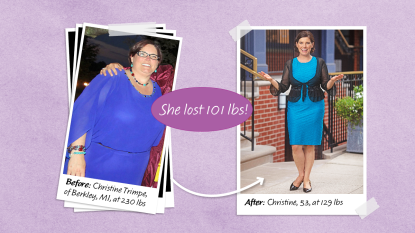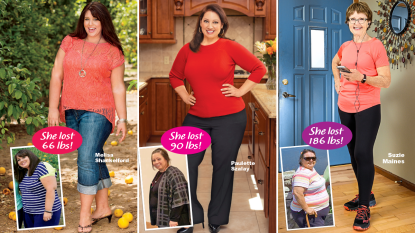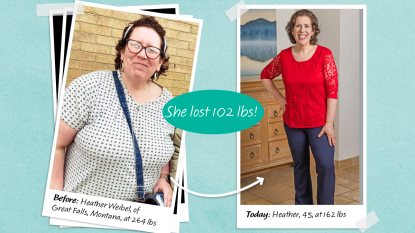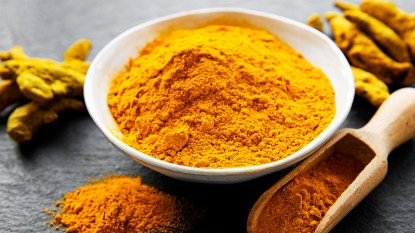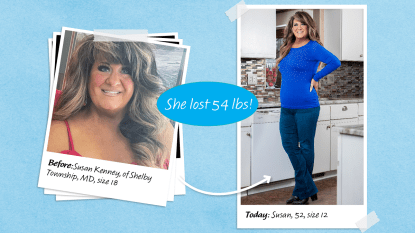This Metabolism Diet Turns Your Body Into a Fat-Burning Machine

For women who’ve tried Atkins, or any of the low-carb diets that are so popular right now, this story probably sounds familiar: “You see someone who’s lost a lot of weight by changing to a high-fat diet, so you decide to try it,” says Cate Shanahan, MD, a Cornell-educated physician and consulting nutritionist for the Los Angeles Lakers. “But after a week or two, you feel horrible — and worse, you’re not losing weight. In that moment, it’s easy to assume, ‘Well, I guess a low-carb diet just isn’t for me.’ But that’s not necessarily the case.”
Indeed, there’s plenty of proof that low-carb dieting can work wonders for women: In a Danish study, postmenopausal women on a high-fat, Atkins-style diet lost five times more weight than those on a low-fat diet. And low-carb plans have also been shown to improve memory by 62 percent, boost mood by 52 percent, enhance sleep quality by 21 percent, and decrease levels of heart-harming triglycerides by 300 percent.
How to Make Your Metabolism Burn More Fat
So why does this way of eating fail to deliver for so many of us? Researchers now have the answer. As scientists at the Yale School of Medicine explain, if we maintain a high-carb diet over time — which most of us do because the standard American diet is so high in carbs — our mitochondria (the body’s energy production engines) shift from burning fatty acids to burning carbs and sugar. Although this is necessary to help the body metabolize the carbs and sugar we eat, there’s a long-term downside: The process of burning sugar causes the mitochondria to produce damaging cellular debris and free radicals, says nutrition expert Mark Sisson. This shortens the life span of the mitochondria and makes it harder for them to burn fatty acids when we do consume a high-fat meal.
As we age, it becomes increasingly difficult to shift the mitochondria back into fat-burning mode. “The negative effects of a carb and sugar burning system build up over time,” Sisson says. “By the time most of us are zero, the body no longer has the machinery it needs to burn fat for energy.” And that means that when you switch to a low-carb diet like Atkins and eliminate the carbs that your mitochondria have grown accustomed to burning, your body won’t be able to create enough energy to fuel all of its essential functions — and you’ll end up feeling tired, foggy, achy, and ravenous.
Metabolism Diet Plan
The good news: It is possible to turn an over-40 metabolism into a fat-burning machine. “The key is to prompt the body to activate the genes that strengthen the mitochondria,” Sisson says. The best way to do that, he adds, is to fill up on healthy fats (which switch on the genes that fire up fat burning) without drastically cutting your carb intake (to ensure the mitochondria that are set to carb burning get the fuel they need). Science suggests that within 21 days, your body will have created new, healthy mitochondria that have never been damaged by burning sugar and are fully primed to burn fat — so you can get all the benefits of an Atkins-style diet.
“The most dramatic benefit is the quick and efficient reduction of excess body fat,” Sisson says, “but you’ll also notice a regulation of your appetite such that you feel alert, well-nourished and rarely hungry.” And science backs him up: Researchers at Texas Tech University in Lubbock, Texas, found that healthy fats decrease the production of hormones that send hunger signals to the brain.
Health Benefits Beyond Weight Loss
Weight loss is just the beginning. Women FIRST spoke to report steadier moods, fewer body aches, and lower cholesterol. “It’s like discovering a hidden superpower that stabilizes your energy, mood, and brain function,” Sisson says.
Filling up on healthy fats and slowly cutting out carbs revitalizes the body’s ability to burn stored fat. The payoff: effortless weight loss, plus reductions in cholesterol and heart disease risk. And three weeks is all it takes, says Sisson: “Just 21 days will give the body time to rebuild its metabolic machinery so it can efficiently burn fat for fuel.”
Metabolism Diet: How It Works
At each meal, you’ll load up on healthy plant-based fats, such as avocado, olives, coconut (including coconut oil, coconut milk, and coconut butter), nuts, and seeds (including unsweetened nut and seed butters and nut milks) as well as full-fat dairy products from pastured cows (such as butter, heavy cream, and cheese). These healthy fats help the body switch over to a fat-burning metabolism by activating the genes that create healthy new mitochondria. Sisson explains, “Your main goal is to increase your healthy fat intake so you feel satisfied and don’t struggle as the body changes its fuel source.”
Fill the rest of your plate with unlimited non-starchy vegetables such as leafy greens, mushrooms, asparagus, and peppers, and four ounces of lean protein such as chicken breast, ground turkey, flank steak, and salmon. Thankfully, there is no need to worry about counting calories or carbohydrate grams. Instead, Sisson recommends eating a small serving of complex carbs, such as a half of a sweet potato or 1⁄4 cup of quinoa or brown rice, at least once each day to provide the body with the fuel it needs while it switches over into a fat-burning state.
To ensure the pounds melt away during this 21-day metabolism makeover, eliminate processed carbs — including refined grains and sugars. You’ll also eliminate processed fats, including polyunsaturated fats (such as canola, soy, cottonseed, corn, and vegetable oils). “The type of fat you’re eating impacts how you feel during the transition,” Shanahan says, who wrote Deep Nutrition ($10.63, Amazon). As she explains, polyunsaturated fats can slow weight loss and irritate the digestive tract, which makes an Atkins-style diet uncomfortable and ineffective.
To further speed weight loss, try these success strategies:
Fat-Load at Breakfast
I advise my patients to eat a carb-free breakfast,” Shanahan says. Why? After fasting for at least eight hours overnight, hormones are primed to quickly and efficiently mobilize energy in the morning. “We can leverage the hormones to teach the body, ‘this is what I want you to use for energy.’” For a simple way to up your intake of the healthy fats that will reprogram your mitochondria to boost fat burn for the entire day, enjoy a breakfast made with coconut oil (like a two-egg omelet fried in tablespoon of coconut oil with two slices of bacon).
Eat When You’re Hungry
Between-meal hunger is often a sign that your body is craving the high-quality fats it needs to rebuild its metabolic machinery, Sisson says. That’s when he recommends reaching for a high-fat snack (see some examples below). But if you don’t feel hungry, there’s no reason to eat just because it’s a designated mealtime. “When you become efficient at accessing and burning stored fat for energy, you’ll have all the energy you need,” he says. “You won’t feel compelled to eat.”
Sprinkle on the Salt
A healthy high-fat diet is rich in vitamins and minerals — but new research in the European Journal of Clinical Nutrition found that the food formula caused women’s iodine levels to plummet by 56 percent over six months. That’s a problem, because iodine is essential to the production of metabolism-revving hormones. To avoid shortfalls, enjoy two to three daily servings of iodine-rich foods (like 1 ⁄4 teaspoon of iodized salt, two eggs, 3 ounces of cod or 6 ounces of tuna).
Burn Body Fat With Zzzs
“Cortisol strongly promotes sugar cravings and fat storage,” Sisson says — but studies show regularly getting quality sleep cuts levels of the stress hormone by 45 percent. If you struggle to get right hours of sleep per night, try to ensure that you’re sleeping in a cool environment. Researchers at the National Institutes of Health report that keeping your bedroom at 66 Fahrenheit can help you drift off 40 percent faster and sleep more soundly all night.
Sweets and Treats That Speed Slimming
Increasing the body’s ability to burn fat for fuel can make weight loss effortless. For the fastest results, trade everyday staples for these fat-rich picks.
Sip Extra-Creamy Java: Coconut cream prods the thyroid to increase the production of hormones that boost metabolism by 50 percent — and it’s delicious in coffee or smoothies in place of milk. To make cream: In a mason jar, combine 1 can of full-fat coconut milk, 1 tablespoon of vanilla extract, and 4 drops of liquid stevia. Then, just seal and shake.
Snack on Cheesy Crisps: Munching on Parmesan chips instead of crackers delivers a bevy of healthy fats and butyric acid, which is a compound that promotes the growth of beneficial bacteria in the gut, so weight loss is even more effortless. To make chips: Bake generous tablespoons of Parmesan cheese on parchment paper at 400 °F for three to five minutes or until crisp.
Enjoy Chocolate Dessert: Avocado can be used in place of processed oils in desserts such as cakes, cookies, and pudding, which infuses treats with healthy fatty acids shown to increase belly-fat burn by 20 percent. To make pudding: Blend half an avocado, 1 ⁄2 cup of coconut milk, 1 tablespoon of cocoa powder, and 1 tablespoon of chia seeds. Cover and refrigerate for 2 hours and enjoy.
Diet Success Story
Suzanne Ryan raced toward her daughter, Olivia, before the toddler could put a filthy dog toy in her mouth. She managed to snatch it away just in time, but then she had to plop down on the couch, as she tried to catch her breath. “I had no energy to chase a toddler,” Suzanne admits. “I realized if I wanted to see her grow up, I had to make some changes.”
A sugar addict and emotional eater, Suzanne had battled with her weight her entire life. She tried numerous programs, but nothing worked long-term. “I was at the end of my rope,” she says. “I didn’t know what else to try.” Then Suzanne discovered a high-fat dieting community online and was inspired by the success stories.
She traded carbs for high-fat foods such as heavy cream, avocado, and meat. It was tough at first, but the results kept her motivated: She lost 21 pounds in 30 days. “Once I eliminated sugar, my cravings went away,” she says.
Within a year, she was down 100 pounds. Now, Suzanne spends a lot of time outside exploring with Olivia. She also blogs about her transformation at KetoKarma.com and recently wrote a book, Simply Keto ($18.95, Amazon), about her weight-loss journey. Most important, her outlook on life has changed. “I was living on the sidelines,” Suzanne says. “Now I have this passion for life.”
A Sample Day to Get You Started
Breakfast: Egg Cups. In a ramekin, mix 3 eggs, 2 tablespoons of water, and 2 tablespoons of diced bell peppers. Bake at 400 °F for 15 minutes. Serve with cheese and avocado.
Lunch: Stew. In a pot, brown 4 ounces of cubed beef and 1 sliced onion. Add 2 cups beef broth, 1 diced tomato, and 2 diced carrots. Simmer until vegetables are soft.
Snack When hungry, enjoy a melon with prosciutto, a handful of nuts, an apple with nut butter, a square of dark chocolate, or a mug of bone broth.
Dinner: Salmon dinner. Roast 6 ounces salmon at 425 °F for 15 minutes. Top with 2 tablespoons of lemon-dill cream sauce. Serve with brown rice and sautéed squash.
Keep Slimming to Your Happy Weight
After three weeks, you’ll feel sharper and happier — and be up to 30 pounds slimmer. If you want to stick with it, this food formula is healthy and sustainable for the long-term, Shanahan says. But now that you’ve morphed into a fat-burning machine, you can power off pounds even faster by switching to a full ketogenic diet, which calls for further cutting of your carb and protein intake for four-to-six weeks. For more details on the ketogenic diet (or for more on the 21-day metabolism-rebuilding plan outlined on these pages), pick up a copy of Sisson’s new book, The Keto Reset Diet ($13.93, Amazon).
Success Story: “I lost 9 pant sizes!”
When Teresa Austin-Bell learned that her son would need a kidney transplant, she pleaded with the doctor to take hers. But she was quickly dismissed. “We can’t consider organs from obese people,” doctors told her. “I felt so helpless,” Teresa reveals. “That’s when I knew I had to change to save my son’s life.”
Teresa knew getting out of her size-32 pants would be no small feat, but she was determined. Teresa’s lifeline became the Atkins diet — rich in high-fat, low-carb foods such as nuts, eggs, fish, chicken, and broccoli. To her surprise, she found the approach satisfying. “Unlike a lot of diets, this didn’t taste bland,” she says. She also focused on walking and getting plenty of quality sleep. In the first two months, Teresa shed 25 pounds, and today, she is 9 pant sizes slimmer.
“When folks tell me how good I look, the rays of sunshine come out of me,” she shares. “I love me more. I feel like I’m the finest thing walking.” Although Teresa’s kidney wasn’t a match for her son, this healthy mom is thankful for the countless ways she can help her child (who is fatigued from dialysis) while he waits on the donor list. “I’ve stepped into the role of active grandparent, playing basketball with his four kids.” An eternal optimist, Teresa says, “I’m so happy I can help. Life gives you lemons and you make lemonade.”
More from FIRST
Combat Weight Gain and Joint Pain With This Simple Anti-Inflammatory Meal Plan






